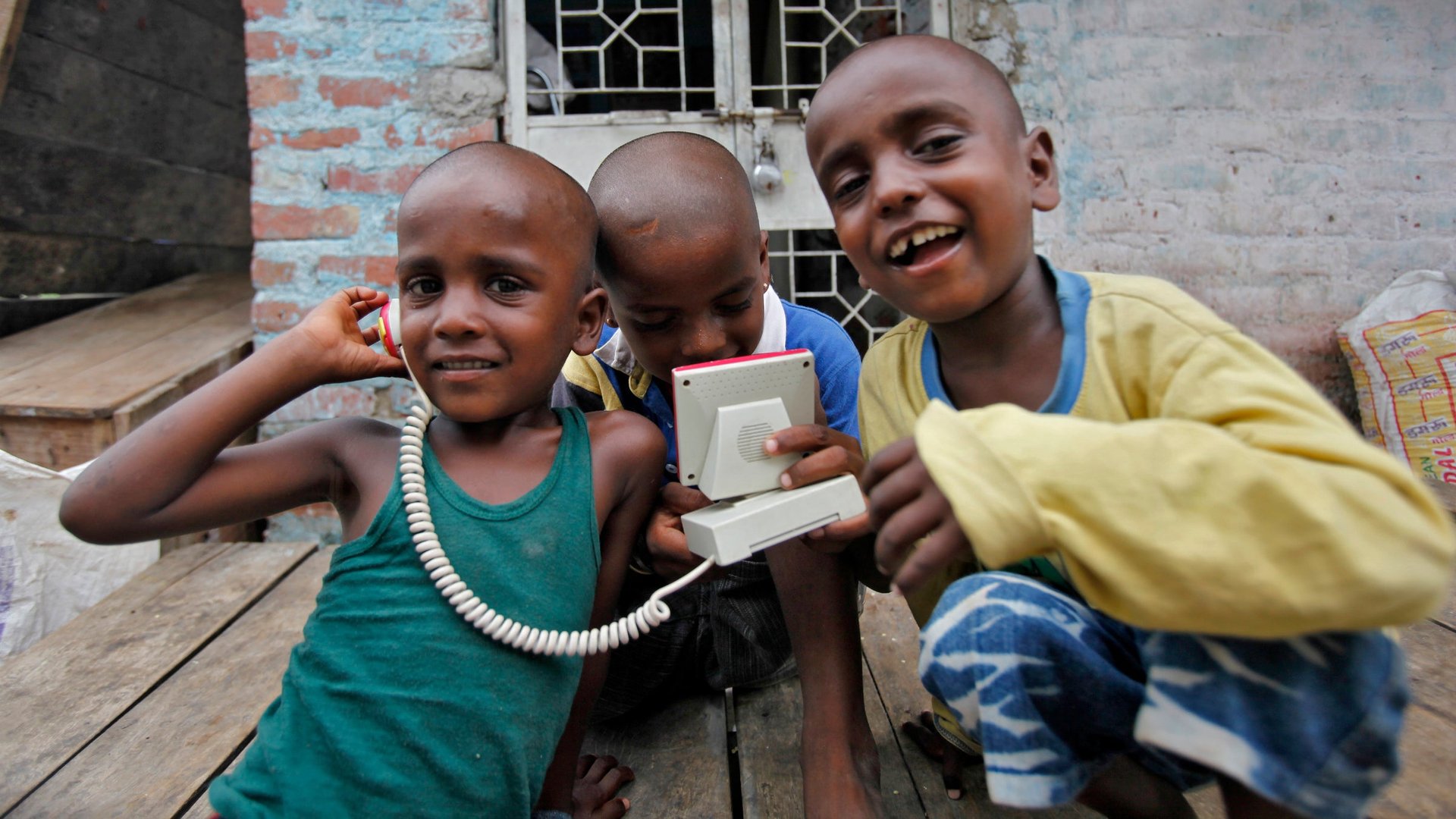India’s government may finally cut its mobile carriers and consumers a break
Chalk it up, in part, to the Indian government’s desperation for cash: The country’s telecom regulator is finally kowtowing to telecom companies’ demands for cheaper spectrum. The regulator has recommended cutting the government’s minimum price for its next round of auctions by up to 60% (pdf), a blessing for telecom companies squeezed by rising costs, and mobile customers suffering through poor voice quality and dropped calls.


Chalk it up, in part, to the Indian government’s desperation for cash: The country’s telecom regulator is finally kowtowing to telecom companies’ demands for cheaper spectrum. The regulator has recommended cutting the government’s minimum price for its next round of auctions by up to 60% (pdf), a blessing for telecom companies squeezed by rising costs, and mobile customers suffering through poor voice quality and dropped calls.
Local telecom players with deep pockets have long sparred with foreign companies like Vodafone and Japan’s DoCoMo to dominate India’s 900 million user mobile phone market, driving down the country’s call rates to among the lowest in the world. Meanwhile, the amount of wireless spectrum available to Indian telecom companies has been paltry compared with the growth of mobile phone users. That’s put telecom operators in a tricky spot: Their profit margins have been squeezed by intense bidding wars over limited spectrum, while a crowded market has prevented them from raising customer prices. In 2010, firms shelled out 670 billion rupees ($15 billion at 2010 exchange rates) for 3G spectrum licenses (third generation bandwidth), almost double the 350 billion rupees that the government had budgeted from the auction.
The market tightened even more after India’s national auditor claimed that the exchequer had suffered a loss of 1.76 trillion rupees in allocating 2G spectrum in 2008. In response, the supreme court cancelled 122 licenses last year and slammed the government for selling the licenses on a first-come-first-served basis rather than conducting a transparent public auction.
The government followed that blunder by ratcheting up the price of spectrum in subsequent auctions, which turned telecom companies off of acquiring more spectrum altogether. The government set the minimum price at approximately 10 times that of 2G spectrum auctioned in 2008. Only 101 of the 176 blocks on offer received bids, forcing companies to opt out of lucrative markets like Mumbai and Delhi. The government raised only 23% of its 400 billion rupees revenue target. An auction in March this year was an even bigger flop. Despite a 30% cut in the minimum price set in November, only one bidder showed up.
The regulators seem to have learned the lessons from the March debacle. If the government accepts the latest recommendations, the minimum price for 1,800 megahertz frequency band, which is used for basic mobile services, could drop by as much as 37% to 14.96 billion rupees ($229 million). The reserve price for the more efficient 900 megahertz band, up for grabs in three key cities—Delhi, Mumbai and Kolkata—could go down by as much as 60%.
In that case, India’s mobile customers can look forward to fatter companies offering better service, while the government rakes in additional cash (an expected 408 billion rupees) to plug up its gaping deficit.